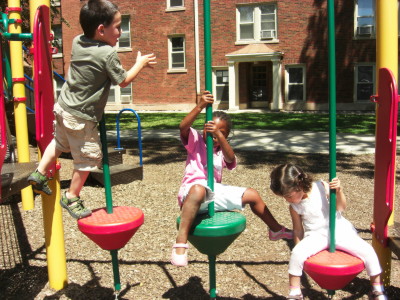Research results that people who were prone to fractures when they were children are likely to fracture even after becoming adults

It is not uncommon for people to say, ``I have had a fracture when I was a child,'' but on the other hand, there are some who say, ``I have never broken a bone since I was a child.'' As a result of analyzing data that followed people for 50 years immediately after they were born, ``People who have experienced multiple fractures as children have a more than twice the risk of fractures after adulthood.'' The result was revealed. .
Is repeated childhood fracture related to areal bone density or body composition in middle age? | SpringerLink
Breaking bones in childhood more than doubles the odds of it happening again as an adult, study finds
https://theconversation.com/breaking-bones-in-childhood-more-than-doubles-the-odds-of-it-happening-again-as-an-adult-study-finds-195008
It is said that about one-half of all children who break bones in childhood, about 25% of boys and about 15% of girls have experienced fractures more than once. However, it is currently poorly understood why some children sustain repeated fractures and whether childhood fracture susceptibility predicts bone health in adulthood. Apparently not.
Previous studies have shown that children who are more likely to have bone fractures are more likely to be from poor families , be physically active, have a high BMI , be vitamin D deficient, have a low calcium intake, and be physically abused. It is mentioned that there are
Children who have repeated fractures may have particularly fragile bones, be prone to accidents, or play sports or exercises that cause fractures. But Kim Meredith-Jones , a senior research fellow at the University of Otago in New Zealand, said: 'The key question is whether children with fractures experience a temporary decrease in bone strength during rapid growth, or a weak bone. The question is whether it will continue into adulthood.”

To explore the link between fractures in childhood and bone health in adulthood, Meredith-Jones and colleagues conducted a longitudinal study of babies born in the city of
The Dunedin study, which followed 1,000 people born between April 1972 and March 1973 for 50 years, measured risky behavior, participation in sports, physical abuse, and socioeconomic status every few years. We evaluate various items that may be involved in fractures, such as In addition, we have repeatedly conducted face-to-face interviews asking about injuries, including fractures, since childhood, and it is possible to compare the history of fractures in adulthood with the history of fractures in childhood.
An analysis of the data found that boys and girls who had multiple fractures as children were more than twice as likely to have fractures as adults compared to the rest of the population. On the other hand, children who had no history of fractures in childhood tended to remain fracture-resistant in adulthood. In addition, childhood fractures were associated with lower hip bone density later in life in women, but this trend was not seen in men. This is the first study to show that both men and women who had repeated fractures in childhood were at increased risk of fractures in adulthood.
However, it is not clear why children with repeated fractures in childhood are more likely to fracture even after becoming adults. Ongoing risk was not associated with other behavioral factors such as risky behavior, demographics, obesity, child abuse, or participation in sports.
It is unclear why childhood fractures are associated with fracture risk in adults, but there is little that can be done to raise awareness and prevent fractures among those who have had childhood fractures. increase. Meredith-Jones recommends doing weight-bearing exercise (light aerobic exercise such as walking or dancing while supporting your body weight on your feet), getting adequate calcium and vitamin D, and eating enough protein and dairy. Behavioral changes such as increasing food intake are all beneficial interventions that can be started early and maintained throughout life.'

Related Posts:
in Science, Posted by log1h_ik







